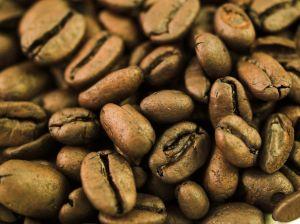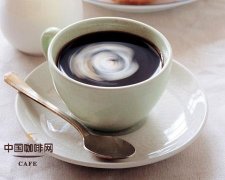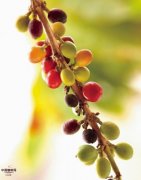Some summaries about the Q-GRADER exam the barista exam

First, about the examination subjects
Q-GRADER is a test for SCAA to drink CQI co-certification. At present, the examination will take 5 days, with a total of 22 subjects. Pass all subjects
You can get the Q-GRADER certification If you have failed subjects, you can pass the make-up exam within 18 months. Specific subjects include:
①, a written test of common sense, can answer 100 multiple-choice questions within 1 hour and pass more than 75 correct answers.
②, the 3-door taste threshold test, refers to the identification of sour, sweet and salty taste. One of them is to find out which of the nine cups of water are sweet, sour and sour.
It has a salty taste; one door is to distinguish three concentration levels in each of the three cups of sour, sweet and salty; one door is three flavors, three grades, that is, nine solutions, each other.
Mix, and then have 8 cups of mixed solution, let you point out what flavor is in these 8 cups of solution, what is the concentration level of each (it may be a mixture of two flavors)
It may also be a mixture of three flavors.
③, the 4-door smell bottle smell test, refers to the 36-flavor bottle of coffee nose. Among them, it is divided into four groups according to the cause of the taste, so
Separate 4 separate tests. The way to test is to lianliankan, 9 bottles on one side, 6 bottles on the other side, so that where you are, one group of 6 bottles is the other group of 9 bottles.
Which bottle in. Then write down the specific taste of the specified 3 bottles. The lights will be turned off during the exam, only the red light will be turned on, and all the bottles will be wrapped.
The purpose of living is not to allow candidates to judge by color.
④, 5-door triangular cup test is after 5 rounds, each round of 6 groups. 3 cups in each group, 2 cups are the same, 1 cup is different, find out the difference
That one of them. There can be at most one wrong group in each round of 6 groups. During the exam, the lights will be turned off, only the red light will be turned on, and candidates will not be allowed to observe the coffee powder through color.
⑤, 1 organic acid test, there are 8 groups of coffee, each group 4 cups, of which 2 cups are added with acid (added acid and lemon count, malic acid, phosphoric acid)
, acetic acid), find out these two cups, and then write down what kind of acid is added.
⑥, 1 sample baking identification, (through Agtron and students' sensory ability to observe coffee beans to test students' baking degree of SCAA standard samples is
The color of coffee beans and coffee powder is used to determine whether it meets the baking color requirements of the SCAA cup test standard.
⑦, the grading test of raw beans is a 20-minute group, a total of three groups, to select raw beans, to select all kinds of defective beans specified by SCAA, and to indicate that
What kind of defects, calculate the number of defects, according to the defects to judge whether it is fine coffee or non-boutique coffee.
⑧, 1 door cooked bean identification, is according to the SCAA standard, in the cooked beans to select whether there are QUAKER beans, and indicate whether it is a fine coffee.
⑨, 5-door coffee cup test, is based on SCAA cup test, carries out 5-round cup test (Brazil, Colombia, East Africa, Indonesia, China)
America). There are six sets of coffee in each round. Six kinds of coffee in each producing area were scored on the basis of SCAA cup meter. Check whether your score is the same as that of the coffee.
Match the proper score of the caffeine.
Second, about the preparation and feeling of the examination
①, let's first talk about the fragrant bottle, which is a relatively sufficient subject in the process of preparing for all the examination subjects.
Coffee nose 36 flavor, is divided into four groups: enzymatic reaction, caramel reaction, dry distillation reaction and aroma pollution, 9 bottles each. When I was practicing,
Find out each of the nine bottles, remember what it tastes like, and then smell it over and over again. The most important memory help is that when I'm practicing, I'm right.
According to the coffee flavor wheel of SCAA, remember the structure of the flavor wheel and all the groups and flavors, then write it down by heart, and smell the flavor in the bottle with 4 groups.
Tao to correspond one by one, this memory effect is very good, can be considered to fully understand the relationship between the flavor wheel and the coffee nose.
②, let's talk about the written test, which is a threshold set by the Q-GRADER test to see if the coffee knowledge accumulated by candidates is rich enough. The examination questions are OK.
It is said to cover a wide range of areas, including planting, varieties, producing areas, treatment, cup testing, production, and even trade.
Personal advice is to read as many coffee books as possible on the basis of familiar SCAA cup test manuals and hand flushing of raw bean defects.
③, raw bean grading, it is necessary to select and classify all the 350g samples that meet the SCAA defect criteria within 20 minutes, and then test
Fill in the paper, time is still very tight.
Candidates are advised to familiarize themselves with SCAA's manual on raw bean defects and be proficient in 6 first-class defects, 10 second-class defects and each defect in Australia.
Count. Only in this way can we have enough time.
④, about the taste threshold test. A sour, sweet and salty solution with different concentrations mixed together to distinguish the flavors, and write down the grades.
No, I think it's very difficult.
I focused on practicing this link before the exam. Insist on drinking water with a strange taste of sweet, sour and salty, with three levels of each of the three flavors, a total of
9 bottles of water, practice with yourself every day, is serious. Unexpectedly, I met a classmate in this exam. It is said that he was equipped with more than 60 bottles of water, that is,
Put all the possible flavors and concentration levels of the combination of possibilities with a bottle to practice, so powerful.
⑤, triangular cup test, this has a lot to do with a person's sense of smell and taste. Five rounds of examination questions are also getting more and more difficult. In the first round, group 6 basically passed
By smelling the coffee powder, you can roughly determine which cup it is, and then confirm it when you drink it. By the last round, almost six groups
Coffee, no group can accurately judge by smelling dry powder, even when drinking the flavor is similar, I personally through the coffee into the mouth
Later, the position of tongue stimulation is different, because it is really difficult to distinguish the flavor when drinking.
⑥, organic acid, baking sample identification and cooked bean identification are basically easy subjects in the exam. Most of them should pass. Organic acid
As long as it is sensitive to acidity and can tell which cup is filled with acid, it can basically pass. Baking sample identification, mainly to understand the SCAA pair and suitability
The regulation of roasting degree of coffee measured in a cup can basically be passed by knowing what the chromatographic values of 58 and 63 mean. Identification of ripe beans
Is to look for QUAKER beans in 100g cooked bean samples.
⑦, about the five doors of cup test, needs to rely on the experience of drinking coffee. There are 5 rounds of coffee in each round, and each round will be graded according to the SCAA standard.
The score should be close to the standard score of the coffee. And in each round, the good or bad trend of 6 groups of coffee should be correct, and some of the 6 groups of coffee should be good or bad.
It is necessary to distinguish between non-fine products.
In each round of the exam, the lecturer will first take out a cup of coffee for grading and correction, itemized to count everyone's score and the lecturer's score. Confirm
The score of this cup of calibrated coffee. This part is also the place where I feel the greatest gain in this exam. In the formal exam, the corrected coffee
It will also be one of those six groups, but it will not test which group the examinee is to see if the coffee is rated again in line with the corrected standard.
I hope the above will be helpful to the friends who are going to take the Q-GRADER exam.
This article is excerpted from issue 32 of coffeet&i
Important Notice :
前街咖啡 FrontStreet Coffee has moved to new addredd:
FrontStreet Coffee Address: 315,Donghua East Road,GuangZhou
Tel:020 38364473
- Prev

The professional standard of baristas divides the profession into three levels according to relevant regulations.
According to the relevant provisions of the Labor Law of the people's Republic of China, combined with the current social and economic situation and the future development trend, in order to further improve the national vocational qualification standard system, in order to provide a scientific and standardized basis for vocational education, vocational training and vocational skill identification, the National baristas Professional Committee of the Business skills Appraisal and Catering Service Development Center
- Next

Characteristics of coffee trees requirements for planting coffee trees
1. Root: coffee root is a conic root system. 2. Stem: the stem of coffee, also known as the trunk, is developed from straight branches. 3. Leaves: simple leaves opposite, green, oval to long elliptic. Flowers: flowers are white and fragrant. 5. Fruit: the fruit is a drupe, usually containing 2 seeds, as well as single and 3 seeds.
Related
- Beginners will see the "Coffee pull flower" guide!
- What is the difference between ice blog purified milk and ordinary milk coffee?
- Why is the Philippines the largest producer of crops in Liberia?
- For coffee extraction, should the fine powder be retained?
- How does extracted espresso fill pressed powder? How much strength does it take to press the powder?
- How to make jasmine cold extract coffee? Is the jasmine + latte good?
- Will this little toy really make the coffee taste better? How does Lily Drip affect coffee extraction?
- Will the action of slapping the filter cup also affect coffee extraction?
- What's the difference between powder-to-water ratio and powder-to-liquid ratio?
- What is the Ethiopian local species? What does it have to do with Heirloom native species?

